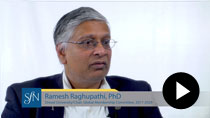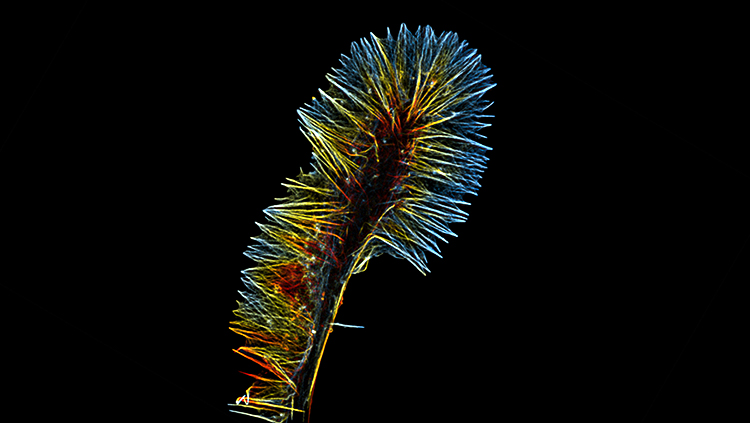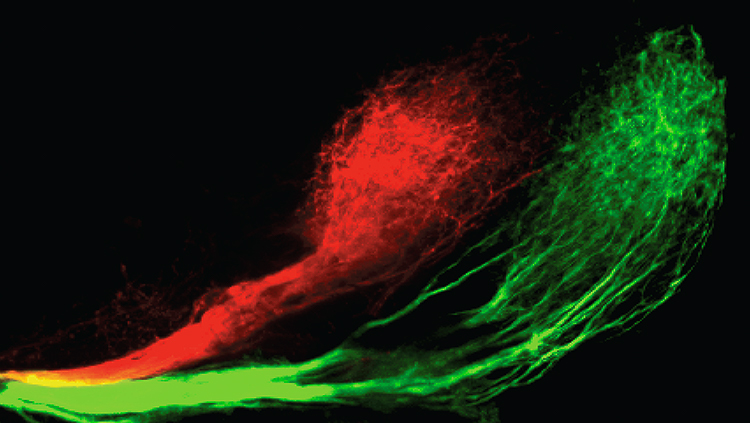Chapter X: Meeting the Needs of an Increasingly Diverse Scientific Community
"When we stop talking about diversity, we’ll actually consider ourselves successful." -- William Martin, 2018419
The committee reorganization in 2005 brought together several major functions: the promotion and support of women and minority neuroscientists, services for graduate students and postdoctoral trainees, and support of the global membership, under the Professional Development, Mentoring, and Diversity Cluster, charged with coordinating efforts to implement SfN’s diversity strategy.420 Over time, this strategy became more closely linked with the needs of SfN’s many student members, as SfN’s strategic plan included a commitment to supporting neuroscientists at all stages of their careers, regardless of gender, race, ethnicity, or geographic location. Diversity and lifespan support became essential factors in the growth of neuroscience and of SfN by 2019, with women and non-Caucasian members consistently at an estimated 45–55% of the membership and trainee membership stable in the 40–45% range. “It’s not only because it makes us feel good,” Eric Nestler (SfN President 2016–17) explained, “it’s not only the right thing to do, it also makes the scientific enterprise better because it means we’re better capturing all of the outstanding expertise that exists across humanity.”421
SfN membership surveys and regular analyses by the Association of Neuroscience Departments and Programs (ANDP) carefully documented the participation of traditionally underrepresented groups in all stages of their scientific careers.422 All of the data indicated that the problem of the “leaky pipeline” continued to be a key issue in neuroscience as in other scientific disciplines, with promising researchers leaving the field at every level. In 2016, women represented more than 50% of incoming graduate students, 50% of postdocs, but only 30% of faculty in neuroscience programs in the United States.423 Similarly, although the percentage of racial and ethnic minorities entering graduate programs had increased from 10% in 1997 to 20% in 2016, only 10% of faculty were from these underrepresented groups.424 These statistics mirrored closely the data collected on women and underrepresented minorities in all areas of science and engineering by the National Center for Science and Engineering Statistics.425
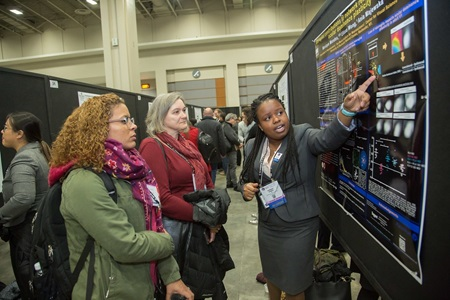
SfN took a critical leadership role not only in finding substantive ways to support women and minorities in neuroscience, but also in changing the underlying culture of science so that anyone interested in a career in science will have the chance to pursue it. For example, in 2001, long before NIH Director Francis Collins announced that he would no longer participate in “manels” at scientific meetings, the SfN Council and the Program Committee had approved diversity guidelines that reminded panel and symposium organizers to make every effort to include “appropriate representation of ” qualified women and minorities in their events, as well as “broad geographical representation.”426 This type of inclusion policy was a key component in helping women and minorities to advance their own careers and serve as role models for others.427 Updated several times, the SfN guidelines as of 2019 included the need to balance established speakers with new investigators and stipulated that these principles applied to all of the scientific events at the Annual Meeting.428
Women in Neuroscience
Since 1980, Women In Neuroscience (WIN) had been an independent organization, adjunct to SfN and made up of SfN members, but without the legal apparatus to make it eligible for grants from the NIH and other federal programs. Despite their modest resources, WIN had sponsored successful mentoring and networking events at the Annual Meeting and provided material and moral support in the form of graduate student scholarships to attend the meeting and supportive venues for female neuroscientists. In 1991, SfN began to take an active stance as an organization to support women researchers, establishing an ad hoc Committee (now named the Committee on the Development of Women’s Careers in Neuroscience, or CDWCN) to focus on “enhancing women’s roles in neuroscience.” Throughout the 1990s, WIN and CDWCN had collaborated in collecting membership data and cosponsoring mentoring events for women scientists.

Two factors identified as crucial in sealing the “leaky pipeline” and promoting successful scientific careers for women are mentors and role models; yet the number of successful women neuroscientists available to serve in these important roles grew slowly. Only three women had served as SfN President in the Society’s first thirty years. The years 2002–05 then saw a triumvirate of women Presidents in Huda Akil, Anne Young, and Carol Barnes. Yet in 2008, Eve Marder still described the Annual Meeting program as dominated by “lists of men and lists of men;” she made the decision to choose “four really outstanding” women as Presidential lecturers that year. She received positive feedback for this groundbreaking effort: “The young women saw it as a statement and they really appreciated it.”429
In 2005, after several years of negotiations over leadership and financial support from SfN, WIN merged with CDWCN to form C-WIN, a permanent SfN Committee. The incoming WIN President became the co-chair of C-WIN, and SfN committed to administering the yearly WIN mentoring awards. The merger meant that WIN programs could be supported with extramural funds and that all members of SfN would “benefit from the combined budgets and unified goals of the two groups and [their] aims to sponsor a wide array of professional development activities.”430 As part of the Professional Development Cluster, C-WIN coordinated its programming with the Minority Education, Training, and Professional Advancement Committee (METPAC, later the Committee on Diversity in Neuroscience, C-DIN) to support women and minorities as they progressed through their careers.431 When the Professional Development Committee was incorporated into a broader Professional Development and Training Cluster in 2009, C-WIN and C-DIN became subcommittees of the PDC.432
In the 2010s, C-WIN devoted considerable resources to understanding – and overcoming - the structural challenges faced by women and underrepresented minorities in neuroscience, recognizing that scholarships, mentorships and networking opportunities were only partial solutions. Although academics were now familiar with the well-documented "leaky pipeline," there had been "little change in the representation of women in higher academic positions since 2000," and experts agreed that simple awareness was not enough.433 To promote equity and diversity more actively, in 2010 SfN embarked on a three-year program called Increasing Women in Neuroscience (IWiN). With support from the National Science Foundation, SfN provided tools to help academic leaders address the issue of implicit bias.434 Implicit gender bias can take many forms, including the tacit, even unconscious, beliefs that truly successful scientists are male, or that women are inherently less competent in multiple and varied aspects of their scientific practice.435 SfN hosted a series of workshops that helped neuroscientists to explore their own biases and identify where these hidden biases could have an adverse effect on a woman’s career path.436 Over the course of the three years, nearly 150 participants spent time examining the situations where implicit bias may be hidden; these members then brought the exercises back to their home institution. As the program ended, IWiN hosted a workshop at Neuroscience 2013 on best strategies and practices for recruiting and retaining a diverse faculty and created a "Gender Gap Toolkit" PowerPoint presentation that SfN members, chapters, and departments could download and use as a starting point for discussing bias and promoting inclusion.437
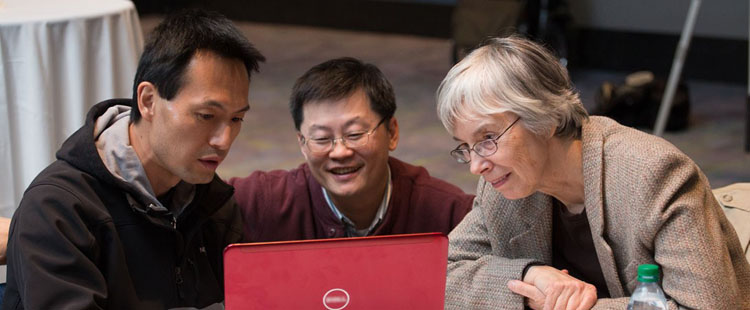
A concurrent stimulus for change was the article, "A Tale of Two Sexes," co-authored by SfN President Carol Mason and FENS President Marian Joëls, which appeared in the journal Neuron.438
SfN leaders also invested significant financial and institutional resources in programs that would help women not only enter the field as graduate students, but also support them through their working lives as scientists. The Society began offering onsite childcare at the meeting in 2009 and worked with the conference center managers to make sure nursing mothers were comfortable.439 In Fall 2018, Council voted to include sexual and gender harassment as forms of scientific misconduct under the SfN Code of Conduct, noting that "the entire scientific endeavor is put at risk by misconduct and harassing or harmful behaviors are inconsistent with a healthy environment for scientific progress."440
Finally, SfN leaders and nominators made an intentional effort to encourage women to take on positions in SfN leadership including Journal, Committee, and Council positions.441 Five women scientists served as President between 2008 and 2019, As of 2019-20, moreover, 3 of 7 SfN officers, 6 of 8 Councilors and 6 of 14 Standing Committee Chairs were women, as well as the Editor-in-Chief of one of SfN's journals – over 50% of the leadership!
Supporting Racial and Ethnic Minorities
SfN demonstrated a parallel commitment to scientists from underrepresented minority groups beginning in the 1980s, through the “transformative” Minority Training Program, established in 1981, and its successor, the Neuroscience Scholars Program (NSP), part of the Professional Development Cluster. As Joseph Coyle commented, “I think we need to work very hard to attract minorities into neuroscience because neuroscience has gotten so broad in its ken; it deals with social issues, it deals with poverty, it deals with the effects of poverty and diet and drug exposure, and all these things that impact people, particularly people who are poor and underserved minorities. So I see them as bringing a special perspective and energy.”442
In 1997, increased NINDS support for the Minority Training Grants allowed the Minority Education, Training, and Professional Advancement Committee (MET-PAC) to subsidize five minority students’ attendance at the Annual Meeting and to provide these trainees with professional and scientific mentorship for three years rather than one.443 NINDS provided more funds in 2000 to initiate the Minority Conference Fellowship, which included pre- and postdoctoral fellowships, as well as support for attending programs other than the Annual Meeting, for an additional 11 individuals.444 The 2005 committee reorganization with a focus on career development renamed MET-PAC the Committee on Diversity in Neuroscience (C-DIN) and recommitted the Society to the support of diversity in the field.445
The NSP expanded its mandate several times and increased its programming to engage the attention of science administrators and educators. In 2007, NSP eligibility expanded to include all undergraduate neuroscience majors; by 2015, the program had grown to include “a tier of resources for all eligible applicants, called Associates. This group gains access to select events at the Annual Meeting, an online library of educational resources and webinars, and an online diversity affinity group of past and current NSP participants for professional networking and guidance.”446 SfN hosted “Preparing the Next Generation of Neuroscience Leaders,” the first NSP conference outside of the Annual Meeting, in July 2017, with speakers from NIH and NINDS sharing strategies for inclusion that would benefit all types of scientific institutions.447 From 1982 through 2019, over 900 neuroscientists benefited from the various NSP grants as fellows and associates.
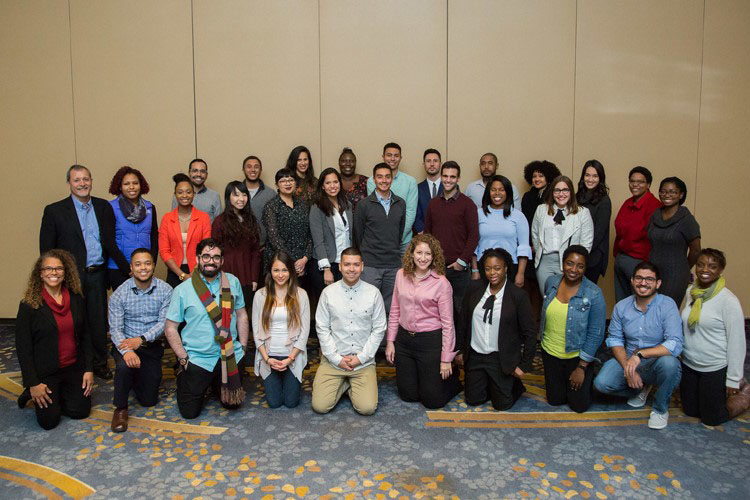
The innovative program received a Summit Award from the American Society of Association Executives in 2014 and, in 2018, the Presidential Award for Excellence in Science, Mathematics, and Engineering Mentoring (PAESMEM) from the National Science Foundation and the White House Office of Science and Technology Policy.448
Focusing on the Needs of Students
The increased emphasis on the "leaky pipeline" meant that SfN had to focus its attention on every part of that pathway, including undergraduate and graduate students, or "trainees." As Ramesh Raghupathi observed, "We want to keep them because that’s the next generation, and once we bring them in as a student, as they advance in their career from graduate student to postdoc to faculty, I think we still want to make sure that we provide value to those members."449 SfN’s education committee partnered with the Faculty for Undergraduate Neuroscience (FUN), beginning in the early 1990s (see Section 1); FUN worked closely with ANDP to establish standards for undergraduate neuroscience majors. But for many years, the SfN poster session excluded undergraduate presenters, while SfN relied on its external partners to take the lead in addressing college student needs.450
In 2003, SfN Council voted to create a separate membership category for undergraduates to join the Society, making it easier for them to present their work and to take advantage of the networking opportunities at the Annual Meeting.451 But the major step forward occurred when SfN merged with the ANDP in 2009 and created the Committee on Neuroscience Departments and Programs (CNDP), “charged with recommending and managing programs, activities, and initiatives that advance education and research training in academic neuroscience.”452 The consolidation necessitated the creation of a new Institutional Program (IP) membership category so that the administrators and heads of departments were able to communicate with members and eligible to participate in SfN events.453 The Graduate School Fair, a natural extension of the IP member benefits, first appeared at the 2012 meeting, growing from 35 programs in that first year to more than 100 in 2019.454 While all SfN members benefited from the professional development resources on Neuronline following its launch in 2011, important goals of the online membership community included the fostering of mentoring relationships for graduate students and the creation of a centralized location (NeuroJobs) for job postings.455
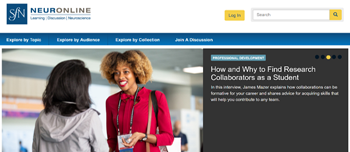
Finally, in 2013, Council approved a planned giving strategy to encourage donations to the Friends of SfN Fund, so that members could earmark support for the Trainee Professional Development Awards and ensure that young scientists would have more opportunities to attend the Annual Meeting and present their work.456
The leadership structure of the Society had meanwhile gradually begun to integrate its graduate student members. In 2011, Council formed a temporary Trainee Advisory Group to provide early career perspectives on SfN initiatives; two years later, the group became the standing Trainee Advisory Committee (TAC).457 As Cara Altimus (TAC Chair 2016–19) explained, “We need to be also hearing from the trainees to understand what do you actually need; what do you want; how do we get you there? It needs to be collaborative, so the individuals in power are working with the individuals affected because, ultimately, science is at stake.”458 The TAC and the Global Membership Committee led a task force guiding the 2016 member survey to elicit ways in which SfN can provide year-round member value to neuroscientists throughout their careers.459 In a complementary effort, JNeurosci launched its Reviewer Mentoring Program in 2019 to train graduate students to participate in the peer review process.460
Related
Endnotes
- Interview with William Martin, November 5, 2018.
- "SfN Council Adopts New Strategic Plan to Renew Focus on Changing Needs, Ensuring to Serve Members Better," NQ Spring 2006:4; "SfN Council Approves Committee Realignment, Adds Clusters," NQ Spring 2006:5.
- Interview with Eric Nestler, November 3, 2018.
- Until 2009 ANDP was a separate but related organization with its own leadership structure and legal charter. The 2009 merger with SfN came at the ANDP’s request and was a key component to implementing the Council’s adoption of a new Higher Education Strategy in the Strategic Plan. In 2019 it was known as the Neuroscience Departments and Programs Subcommittee under the Neuroscience Training Committee, part of the Higher Education and Training Cluster. See "SfN Professional Development and Higher Education: Evolving to Meet Changing Member Needs," NQ Summer 2009: 1, 10-11 for the details of the initial transition into the SfN committee structure.
- Executive Summary of Report of Neuroscience Departments & Programs Survey Academic Year 2016–2017, p. 3
- Lesly Huffman, Robert E. Fellows, and Ronald I. Schoenfeld, "The1998 ANDP Survey of Neuroscience Graduate, Postdoctoral, and Undergraduate Programs" p. 10
- National Science Foundation, National Center for Science and Engineering Statistics. Women, Minorities, and Persons with Disabilities in Science and Engineering: 2019. Special Report NSF 19-304. Alexandria, VA. Available at .
- Francis S. Collins, "Time to End the Manel Tradition," June 12, 2019 ; "New Diversity Guidelines for Meetings and Conferences" NQ May/June 2002: 15; Interview with Moses Chao, December 19, 2018.
- Virginia Valian, "Invite Women to Talk," Nature 495 (March 7, 2013): 36.
- "Council Acts on Education and Advocacy Initiatives, Diversity Guidelines and More at Neuroscience 2004," NQ Winter 2005: 14-15;
- "Ad Hoc Committee on Women’s Issues in Neuroscience" NN 22 (July/August1991):3
- Laurel L. Haak, "Women in Neuroscience (WIN): The First Twenty Years," Journal of the History of the Neurosciences 11 (2002): 70-79, p. 74; SfN Council Minutes October 23, 1999, p. 16-17.
- Interview with Eve Marder, November 3, 2018.
- "New Committee Promotes Women in Neuroscience," NQ Spring 2005: 12.
- Council Minutes August 5 2004, p. 5-6.
- "SfN Professional Development and Higher Education: Evolving to Meet Changing Member Needs," NQ Summer 2009:1,10-1
- Moses Chao, "Gender Inequality: Biases and Challenges," NQ Summer 2012: 2-3, p. 2
- "SfN Promotes Equity and Diversity in Academia" NQ Summer 2010: 12-13.
- Jennifer Raymond, "Most of Us Are Biased," Nature 495 (March 7, 2013): 33-34.
- Chao, "Gender Inequality: Biases and Challenges," p. 2-3.
- "IWiN Working to Advance Women in Neuroscience," NQ Summer 2013: 11; "SfN Creates Toolkit to Address Gender Gap in Science," NQ Fall 2015.
- Marian Joëls and Carol Mason, "A Tale of Two Sexes," Neuron 82 (18 Jun 2014): 1196-1199.
- The topic was first discussed in the Spring 2003 Council meeting but insurance issues prevented offering onsite childcare for several more years.
- "Fall Council Roundup," NQ Winter 2019.
- Carol Mason, "Message from the President: Women in Neuroscience: A Call to Action" NQ Spring 2014: 1-2
- Interview with Joseph Coyle, November 5, 2019.
- "1997 Minority Conference Fellows Usher in Expanded Program" NN 29 (January/February 1998): 17.
- "Society Offers New Training Fellowship for Minority Neuroscientists," NN 31 (July/August 2000): 13; "Society Maintains Long-Standing Commitment to Advancing Minority Representation," NN 32 (September/October 2001): 11.
- SfN Council Minutes November 12, 2005; SfN Strategic Planning Meeting Minutes July 27-28, 2005; "SfN Council Approves Committee Realignment, Adds Clusters" NQ Spring 2006: 5. As described in the section on Women in Neuroscience, in 2009 C-WIN and C-DIN became subcommittees (WINS and DINS) of the Professional Development Committee in the Professional Development and Training Cluster.
- "30 Years of Advancing Diversity in Science" ; "Neuroscience Scholars Program Broadens Reach" NQ Summer 2015
- "Message from SfN President Eric Nestler: ‘Affirmative Attention’ to Increase Diversity" NQ Spring 2017; "SfN, NIH Experts Discuss How Diversity Advances the Field," NQ Summer 2017.
- "Neuroscience Scholars Program Broadens Reach" NQ Summer 2015; "Presidential Award Recognizes Value of Neuroscience Scholars Program" NQ Fall 2018.
- Interview with Ramesh Raghupathi, November 4, 2018.
- Ramirez and Normansell, "A Decade of FUN"; Jean C. Hardwick, Michael Kerschner, Barbara Lom, Julio J. Ramirez, and Eric P. Wiertelak, "From Faculty for Undergraduate Neuroscience: Encouraging Innovation in Undergraduate Neuroscience Education by Supporting Student Research and Faculty Development," CBE – Life Sciences Education 5 (Summer 2006): 86-90.
- "Society Membership Growth Invigorated by New Measures" NQ Summer 2003: 9.
- "Council Round-Up: Fall 2009 Meeting," NQ Winter 2010:4;
- "New! Graduate School Fair" NQ Winter 2013: 11;
- "SfN’s Online Presence: Building Value, Making Connections," NQ Spring 2011: 1, 8-9.
- "Organizational and Financial Highlights" FY 2013 Annual Report, Creating Value in Challenging Times, p. 19; "Q&A: Spotlight on Donors and the Friends of SfN Fund," NQ Fall 2017.
- Summer 2012 Council Minutes, p. 4; "Council Roundup: Spring 2013 Meeting" NQ Summer 2013: 4.
- Interview with Cara Altimus, November 7, 2018.
- "Exploring the Changing Needs of SfN Members," NQ Fall 2016.




